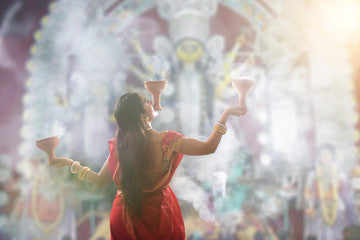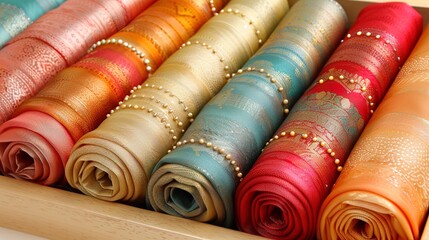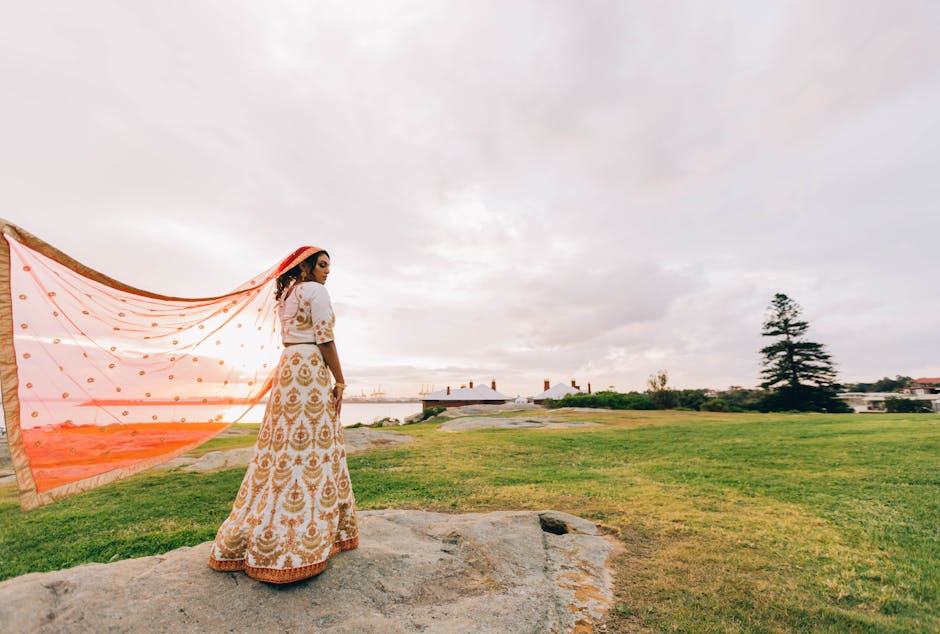The Art and Elegance of Silk Sarees: Explore the World of Silk Sarees
Discover the timeless elegance of silk sarees, including the intricate process of making them, the allure of wine-purple silk sarees, various types of silk sarees, and the luxurious appeal of pure tissue silk sarees. Learn why Balaram Saha is the ultimate destination for authentic handloom silk sarees.
The silk sarees have always been admired for their beauty, texture, and tradition as fashionable clothing items. Whether for a wedding ceremony or for festive occasions, these beautiful garments are an important part of an Indian woman’s wardrobe. This article explains how silk sarees are produced, describes the fascination with wine-purple color in sarees, describes different types of silk sarees, and explains why pure tissue silk sarees still remain popular today.

How Silk Sarees Are Made
The Sericulture Process
Silk production begins with sericulture, the cultivation of silkworms. Here’s a step-by-step look at the process:
- Silkworm Rearing: Silkworms feed on mulberry leaves and for this reason, the trees are cultivated as a source of food for the silkworms. These are aquatic animals that once they hatch from the eggs, feed and grow without any pause.
- Cocoon Formation: When fully grown the silkworms create cocoons from silk thread extracted from their mouth glands. Inside each cocoon, there is only one uninterrupted strand of silk.
- Cocoon Harvesting: The cocoons are then gathered and placed in boiling water to kill the pupae within which makes it easier to pull the silk without damaging it.
Silk Thread Extraction
- Reeling: The action of drawing the silk threads from the cocoons is referred to as reeling. A number of strands are intertwined to form a more robust thread for the purpose of weaving.
- Twisting and Dyeing: The silk threads are twisted to enhance their tensile strength before dyeing them in various bright colors with natural and synthetic dyes.
Weaving the Saree
- Loom Setup: The threads are laid on a loom on which the weaver carefully constructs the warp which is the lengthwise threads and the weft which is the crosswise threads.
- Weaving Techniques: This involves the use of different techniques of weaving that give designs and texture to the fabric. These sarees are much appreciated for the hand work involved and it may take weeks or even months for a weaver to complete a single saree.
- Finishing Touches: There are several other processes the saree has to pass through after it is woven such as washing, drying, and ironing so that it will get a good sheen and a nice drape.

The Evolution of Silk Sarees
Historical Significance
But, silk sarees have a tradition that dates back several thousand years. Although they are mostly associated with clothing and fashion today, they were once reserved only for kings and other nobles due to their shiny appearance. As per documents and literature that has been retrieved from sources like scriptures, the word ‘saree’ came into existence when silk sarees were regarded as luxurious products that were worn during specific ceremonies or occasions.
Modern Adaptations
Moreover, contemporary fashion in silk sarees has taken a different outlook wherein traditional aspects of the sarees are maintained but infused with modernity. It is important that new patterns, color combinations and additional accessories are constantly developed and incorporated into silk sarees so that they fit into as many trends as possible for the younger generation.
The Allure of Wine Purple Silk Sarees
Richness in Color
The Wine-purple silk sarees epitomize sophistication and elegance. The wine purple, a very dark and rich color, has a royal appeal enhancing the look of most wearers making it popular with most occasions.
Versatility in Design
These sarees are beautifully designed and decorated with many types of designs and work such as Zari work, Embroidery work, and Sequin work either simple or heavy wine purple silk sarees match standards of all kinds of people’s choice.
Popular Trends
Wine purple silk sarees have emerged as trendy dresses in the recent past, and are mostly used for wedding occasions and other functions. This intense and warm shade of dark brown is versatile for most skin complexions, granting an aura of opulence. Trends have evolved over time and include wearing a wine-purple saree with a different color blouse and statement jewelry pieces.
Celebrity Endorsements
The wine-purple silk sarees have also gained popularity in recent days, courtesy some celebrities and fashion trends. These sarees also feature in gobal weddings, glamour events, fashion runways, and many occasions categorizing them as current fashion trends.
Pairing and Styling
- Jewelry: The ‘wine-purple silk sarees’ are ideally worn with gold or silver accessories. Statement necklaces chandeliers and bangles also help in the enhancement of the attire.
- Blouse Choices: Appropriate or even opposing colors of blouses can increase the beauty of the saree. Thus wearing fun sleeves or different types of neck generous lines on clothes can enable the person to set the pace and come up with a different look.
Types of Silk Sarees
Tussar Silk Saree
- Texture and Appearance: Texture and Appearance: Tussar silk or Kosa silk which is produced from the caterpillar of Tassar moth is known for their texture and golden sheen. Its shine is not as rich as other types of silk but adds some kind of character to it.
- Cultural Significance: The tribal people of India particularly the women prefer to wear tussar silk sarees and therefore, the designers often depict nature art motive on the sarees.
Matka Silk Saree
- Durability and Comfort: Matka is produced from waste Mulberry silk and is sily rough then pure mulberry silk. It is comfortable to wear and rather durable which makes it possible for people to wear it daily.
- Rustic Elegance: Matka silk sarees are made with some simple but brilliant designs on the body of the saree with a true depiction of handloom weaving.
Muslin Silk Saree
- Softness and Lightness: Muslin silk cloth is one of the soft and light fabrics that is appropriate for the hot climate area. It has a very neat and presentable manner of fitting and one can easily spend several hours wearing it.
- Sheer Beauty: Muslin silk sarees look light and this very look makes them highly suitable for occasions that take place in the evening and other joyful ceremonies.
Garad Silk Saree
- Traditional Appeal: Garad silk sarees specifically have a plain white or off-white with a red border look or design to them. They are usually used in cultural religious rites and other occasions such as festivals.
- Pure Silk: These sarees available here are pure silk based and these fabrics are very comfortable to drape for special occasions.
Pure Tissue Silk Saree
- Luxurious Texture: It is produced by weaving together silk fine and zari threads which give the fabric a metallic kind of shine and the fabric so produced is very light.
- Elegance in Design: Such sarees are used for wedding and ceremonial purposes, and the deep artistic work on the sarees only adds to their beauty.
The Craftsmanship Behind Handloom Silk Sarees
Skilled Artisans
Handloom silk sarees involve skillful and hardworking input owing to the nature of the invention of the fabrics. Craftsmen usually undertake their operations in clusters that can be from individual families passing down the knowledge from one generation to the other.
Traditional Techniques
- Dobby Weaving: This technique is produced by the dobby loom to develop small and simple geometric designs on the material.
- Jacquard Weaving: A bit more advanced process than the above-mentioned technique is jacquard weaving, in which high patterns can be woven on the saree.
Regional Variations
Different regions of India are known for their unique styles of handloom silk sarees:
- Banarasi Silk: Originating from Varanasi, these sarees are renowned for their intricate brocade work and luxurious feel.
- Kanchipuram Silk: From Tamil Nadu, Kanchipuram silk sarees are known for their rich colors and bold designs.
- Baluchari Silk: Hailing from West Bengal, Baluchari silk sarees are famous for their elaborate motifs depicting mythological scenes.
Buying Silk Sarees from Balaram Saha
Balaram Saha Handloom Saree Store
Balaram Saha handloom saree store where one can find sarees with quality and tradition in the handloom industry. Their extensive collection of silk sarees includes a variety of designs and styles to suit every occasion.
Balaram Saha Online
- Convenience: Shopping online at Balaram Saha provides the convenience of browsing their entire collection from the comfort of your home.
- Authenticity: Each saree comes with a guarantee of authenticity, ensuring that you receive a genuine product.
Customer Experience
- Reviews and Testimonials: Customers have identified the excellent work of Balaram Saha having high quality and well-maintained products.
- Store Photos: A glimpse into the store through photos showcases the vast array of beautiful sarees available.
Conclusion
Silk sarees are more than just a piece of clothing; they are a symbol of heritage, craftsmanship, and timeless elegance. Whether it’s the intricate process of making silk sarees, the captivating charm of wine-purple silk sarees, the diversity of types of silk sarees, or the luxurious feel of pure tissue silk sarees, each aspect adds to their allure. By choosing to buy from Balaram Saha, you are not only embracing a piece of India’s rich cultural heritage but also supporting the skilled artisans who dedicate their lives to preserving this tradition. Explore the exquisite collection at Balaram Saha, either in-store or online, and find the perfect silk saree to add to your wardrobe.





